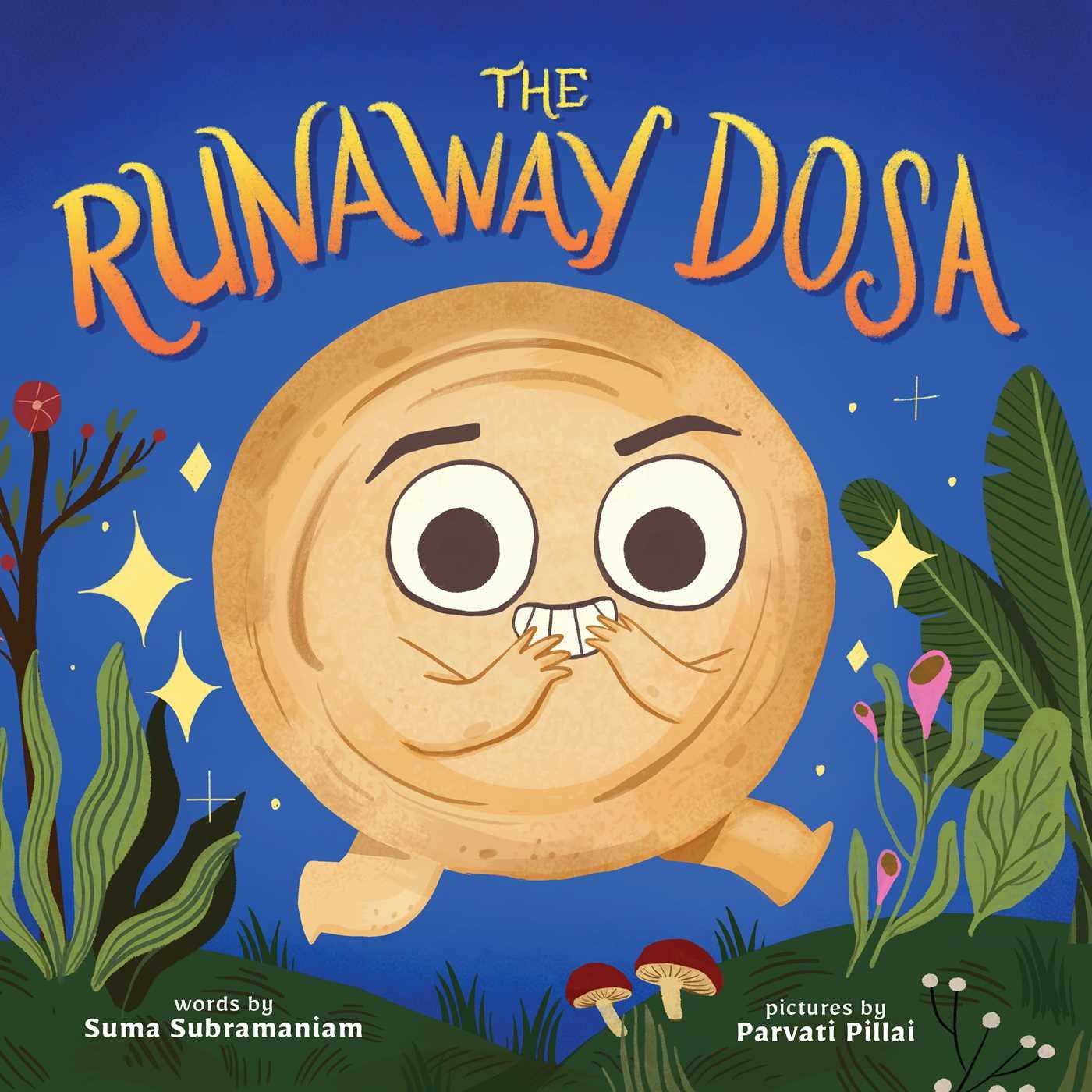Guest Post: Making Connections Through Dosas by Suma Subramaniam
Crispy or soft, spice-laden or not, dosa/dosai (தோசை in Tamil) was a staple dish of my childhood. So I’m lip-smacking happy to welcome Suma Subramaniam back to Writing With a Broken Tusk as she shares how her lively new picture book, The Runaway Dosa, illustrated by Parvati Pillai, came to be.
A dosa is a South Indian crepe and can be as simple or complex, traditional or non-traditional as you want to make it. It is gluten-free and can be made using various ingredients to cater to different dietary needs.
There is no question that food and animals are enticing topics for young readers. They have played significant roles in books for a long time. However as a child, I hardly read any children’s stories about Indian food even if that’s what I ate every day at home. I didn’t see the publishing landscape change even after I became an adult.
In the summer of 2015, I was working with my faculty advisor, the one and only Jane Kurtz in the Vermont College of Fine Arts MFA in Children’s and Young Adult literature program, when we both challenged each other to write a story from the cultures we grew up in. The story would be inspired by The Gingerbread Man—a folktale about a man made of gingerbread who runs away from a cast of characters.
Jane Kurtz was an early believer of this story, and I’m thrilled that this book will be available now in honor of the relationship I share with her. She created The Runaway Injera for Ready Set Go Books which is one of the bestsellers of the Open Hearts Big Dreams Fund Program for children in Ethiopia. I created The Runaway Dosa,, also inspired by an all-time favorite Tamil rhyme, “Dosai! Amma, Dosai,” for dosa lovers all over the world.
For children who are already familiar with the repetitive pattern and tempo of The Gingerbread Man, The Runaway Dosa extends beyond Indian culture to amplify and embrace global food and a South Asian culture.
The story reconnects readers of all ages to a well-enjoyed delicacy and a world of amazing fantastical animal characters from Indian folklore. Parvati Pillai’s attention to detail in the illustrations shows children represented in an authentic Indian family setting. To the little girl and her brother in the story, they’re savoring a regular breakfast with their family and leading a normal life. The children use their hands to eat the dosas. The names of the ingredients and condiments that go into the making of the dosa and eating it may be unfamiliar to some readers. However, enjoying a family meal together and going on a fun adventure is a universal experience.
The connection children make through food and animals is also a way to tell they’re curious and they care for the diverse natural world around them. This story shows how much fun it can be when different cultures are blended together.
I hope The Runaway Dosa makes an entertaining read-aloud in classroom, library, and home settings, helping young readers make their imagination come alive with wonder and excitement.

